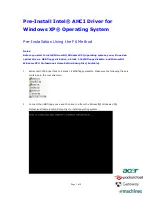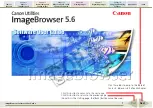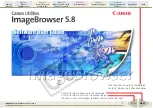
WiseScript Package Editor Reference
99
WiseScript Actions
Older
For File Version, this replaces the existing file if it has a version resource
that is older than the new file. If the existing file lacks a version resource, it
is not replaced.
For File Date/Time, this replaces the existing file if its modification date
and time are older than the new file.
z
Retain Duplicates in Path
By default, version checking removes existing copies of .DLLs that are found in the
path list. To suppress this feature, mark this check box.
z
Existing File Pathname
(WiseScript Package Editor only) You can use SmartPatch to create a patch file that
contains only the differences between the older installation and the new installation.
If you are using Smartpatch, specify the path where the installation can expect to
find one of the files listed in Previous File Versions. If a wildcard was used in
Source Pathname, this field should contain a directory. Start the path with a
variable.
z
Previous File Versions
Use the Browse button to create a list of files that are older versions of the file or
files being installed.
See also:
Files
on page 52
Install SVS Package
¾
WiseScript Package Editor only
This action installs a Virtual Software Package (VSP) on a destination computer. You can
use this action to create a WiseScript that installs any number of VSPs.
The computer on which this action runs must have the SVS Driver runtime or compatible
version of the driver. You can add the SVS Driver runtime on the Runtimes page.
However, we recommend that you create a release for your .WVP file on the Releases
page in Virtual Package Editor. When you create a release in Virtual Package Editor, a
WiseScript is created that contains all the logic needed to properly install a VSP.
See Releases Page in the Virtual Package Editor Help and
Runtimes
on page 70.
This action references a VSP that is in the virtual software project file (.WVP) format.
You create .WVP files in Virtual Package Editor. When this action runs on an end user’s
computer, it imports a .VRA file into an SVS layer.
See About Virtual Software Package Formats in the Virtual Package Editor help.
After you add an Install SVS Package action to a script, you can open its .WVP file in
Virtual Package Editor directly from the WiseScript. To open the .WVP file, select its
Install SVS Package action and select Open Package from its right-click menu. If you
edit and recompile the .WVP in Virtual Package Editor, those changes are incorporated
into the WiseScript the next time it is compiled.
















































